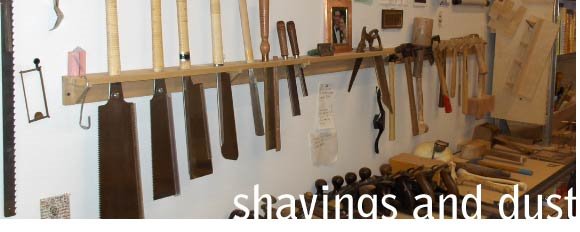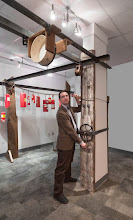here at Syracuse University there is a college called the iSchool. It is officially called the College of Information Technology, but iSchool sounds cooler, so that is how it brands itself. Yesterday they had a get-together for people from their school and from ours ("art and design people"). It was organised by a Ph. D. student with a background in art who is looking at communication in ways that doing doctoral work in information technology makes sense.
She said to us that the iSchool deals with the place that “people, information, and technology intersect.” The assumption is that the technology is digital, which of course I find off-putting. As many of you know, my relationship with digital technology tends to be contentious at best, and there are many things about digital technology that I find downright offensive.
But then she said that phrase about “people, information, and technology.” Which got me to thinking about technology. After all, a hand saw is technology, in the common understanding of what technology is. The root of “technology” is the Greek word “techne,” which means “art” or “skill.”
Well, I am interested in art and in skill, that goes without saying. “Techne” is also the root of “technique.” And of “technical,” which describes a lot of things that also interest me.
So now I am intrigued. Because when seen in that light, technology becomes something altogether different. If it is about using art and skill to manipulate objects or materials or data, well, that is what I do too, isn’t it? As a maker I apply art (I hope) and skills (which I am still learning, of course) to materials to make objects that resonate in some way with the end user. That is an intersection of people and information and technology in some way, of course. As an educator, I apply art and skill to leading my students towards a larger understanding of the world around them and of the field into which they are going to go when they graduate. Which is absolutely the intersection of information and people and techne-ology.
I still find the interface difficult. The screen is off-putting. I worry that we as a culture are spending too much time living life at a remove, that we have lost sight of where things come from, how they get to us, and what happens when they leave our immediate sphere. I worry about relationships that exist only digitally, in which two people may seldom or never meet face-to-face, and what that means with regards to interpersonal interaction. But then one of my best friends lives in New York City, and I only see her regularly through the computer, and many of the conversations we have in the digital sphere greatly influence the way I make and teach. So even as I fret about the implications of an increasingly digital existence, it does enhance my immediate life as a maker and a teacher in (what I think to be) positive ways.
One of my jobs now seems to be to figure out how to reconcile my Great-Grandfather’s handsaw with my Macbook Pro. And how do I help my students navigate a world in which the effects of the first are just as relevant as the effects of the second in a way that is not tinged with Luddite rhetoric?
Matthew Crawford wrote somewhat glibly that if you are in the U.S., and need a wall built, you are going to have to hire a local tradesperson, because “you can’t hammer a nail from India.” In his defense of the manual arts, it was impossible for him to separate craft from making, but the implication in that book is that there is somehow less craft in the digital side of making than there is in, say, plumbing. I share that view in the broader sense, but conversations that I have been having here over the past few months have started me thinking more and more about the craft of manipulating data, and the close corollaries that can have to manipulating anything else, whether it is wood or steel or stone or plumbing pipes or a car engine. In the end, it is using tools to manipulate a raw material and provide a finished product. No difference.
This may seem self-evident. It is not, I fully understand, a ground-breaking realization. But it represents a huge step for me, somewhere in the realm of the Catholic Church finally grudgingly admitting that, okay, maybe the sun does not, in fact, orbit the Earth. There is a great deal of thinking that I will need to do now about making and about craft, about the relationship of all craftspeople to their tools and to each other, and how we can all work together to effect positive change.
New bridges all the time, here, and new boats landing on well worn shores, bringing emissaries from a larger world. How lucky to be here now.


No comments:
Post a Comment